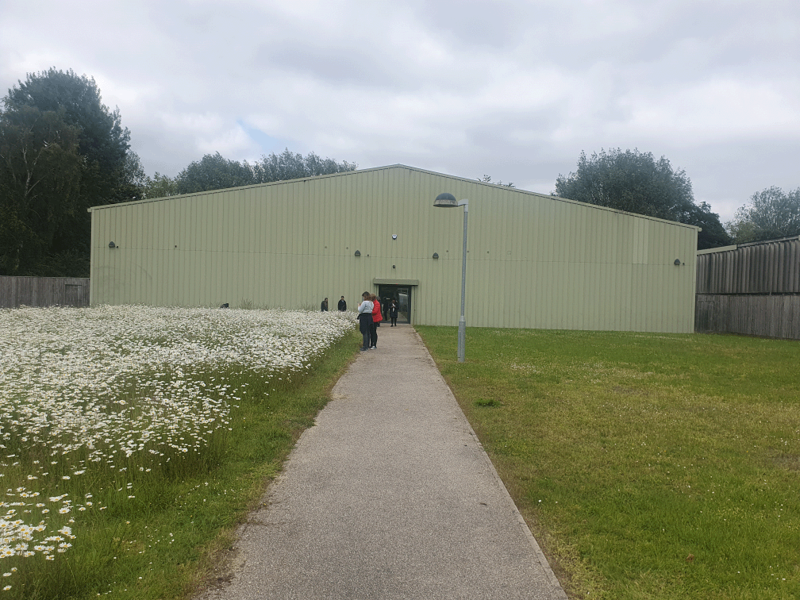Green Shed rewilding project
Project overview
A small team from the GLAM Divisional Office is piloting a small rewilding programme at the Osney Mead Green Shed. This will allow part of the lawn to grow into a wild green space to increase biodiversity and enhance the habitat for wildlife. The target and expected outcome of this short project is to test the effectiveness of small, low-cost interventions to increase species diversity and/or abundance.
“When [we] first returned to the Green Shed [in July 2021] the lawn was full of lovely wildflowers and the sounds of nature, but when we came back the morning after, the lawn had been mown and it felt like a much more quiet and bleak space.”
The Green Shed is within the Osney Mead industrial estate, on University-owned land. The front part of the site is a large lawn, enclosed by conifer and beeches hedges and wooden fences, while behind the Shed is the Thames footpath, and the river itself.
We plan to divide the lawn into two halves and to request that Estates continue to mow the lawn on the right-hand side of the path but leave the left-hand side to ‘rewild’ (with mown edges), and to monitor and record differences in biodiversity between the two areas. In addition, we will install a log pile in a shady, damp spot, a bird box and a bee hotel.
Formal biodiversity monitoring will include plant and insect diversity (butterflies, moths (using light traps), caterpillars, bees, hoverflies and ladybirds). Informal monitoring (by visitors to the Green Shed site) will include birds and mammals. Monitoring will be recorded using the iRecord app. We will draw on cross-GLAM expertise and give colleagues the opportunity to do hands-on biodiversity work.
Please get in touch if you would like to get involved at sustainability@glam.ox.ac.uk
Project diary
January 2023
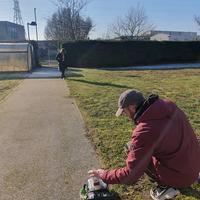

On a cold day in January, Emmas Thomas and Webster and Giles Lingwood met at the Green Shed site for the first time. The first impression was just how big the lawn is once one is inside the gate: it looks so much smaller from the footpath.
Our task on this first visit was to measure the site so that we could buy enough rope for marking out the boundaries for mowing at a later date (idea later dropped). We used the laser measuring device, borrowed from the Museum of Natural History, and an old-fashioned tape measure. Again, we were impressed (and slightly awed) by the size and scale of the site.
Beforehand we had visited our Bodleian colleagues at the Osney One site for a tour of their riverside offices, and were shown some of the sustainability enhancements underway there, including the herb garden and the multiple recycling facilities, as well as the exciting plans for their own rewilding site. We look forward to being able to collaborate with Osney One once the Green Shed project gets underway.
February 2023
We submitted a proposal to the Ashmolean’s Equality, Diversity, Inclusion-Decolonisation-Environmental Sustainability (EDIDES) funding scheme. It was a useful exercise in helping us to plan the project and to ensure that we had thought about with which colleagues we need to liaise, and about potential risk factors. We were later awarded a useful amount of funding by the Ashmolean which will help to pay for volunteer expenses and wildflower seeds.
March 2023
The Emmas and Giles met with Deborah and Harrison from the Estates team on Teams to discuss the project with them. It was great to hear that the Estates team have experience of rewilding lawns in other parts of the University – for example, Harris Manchester and the Law Library – and are very open to discussing our ideas and offering guidance on the best approach.
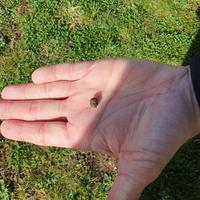
The following week the project team met at the Green Shed site with Deborah and Harrison from Estates and Darren Mann, Collections Manager in Life Collections at Oxford University’s Museum of Natural History, to go over our plans for the site and to make a start on the biodiversity monitoring. The Estates team were again really helpful and receptive to our ideas, even suggesting a possible site for growing clematis on one of the fences. It was wonderful to wander around the site with Darren Mann, whose expertise on the fauna of the site is invaluable. Darren spotted signs of foxes, rabbits and moles and helped us to spot great tits, long-tailed tits and blue tits flitting between the trees and hiding in the hedges.
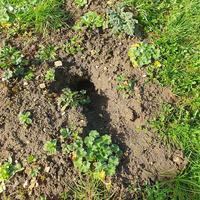
Darren seemed to be impressed by the plant life already growing on the site, and spotted daisy, crucifer, wild germanium, mouse ear, groundsel, purple dead nettle, and yarrow. Darren suggested that we invite botanists from the Ashmolean Society to do a full plant survey at the site, and also suggested that we could run a worm identification survey event at the site and upload the data into the national Earthworm Society of Britain dataset.
On Darren’s recommendation we took pH and moisture measurements of the soil using our new soil testing kit (from Wilco’s). The hypothesis is that the mowed side of the lawn will be drier – and therefore less able to support plant life – than the rewilded side of the lawn. Darren recommended that we check/add our soil data to the UK Soil Observatory.
We asked Darren about whether we should feed wild birds and he suggested that we only feed in frost period, and suggested fat balls. Darren also suggested that we encourage sparrows by making a sparrow ‘block of flats’ with multiple boxes because they are sociable birds who like to nest together.
Darren found two tiny animals at the site, which he took back to the lab at the Museum of Natural History to identify. They were Armadillidium vulgare, the common pill-bug, and Trochulus striolata, Strawberry snail.
May 2023
Following up from Darren Mann’s suggestion to contact the Ashmolean Natural History Society of Oxfordshire (ANHSO) to create a plant survey of the lawn, the team headed to the Green Shed on a lovely sunny morning in May to meet the ANHSO team.
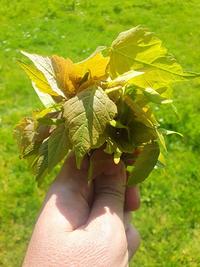
Upon arriving at the Green Shed we bumped into a member of the estates team who had just cut the borders of the lawn for the first time, and it looked great (and also put to rest fears of the whole lawn being cut). We were also pleasantly surprised by how much the lawn had grown and the colour that had begun cropping up all over the place. When the three team members from the ANHSO arrived, they were excited by the prospect of working on the site, commenting on how unique it was for them to work in a green space set in such an industrial area and relieved that it was a much more compact site, not an entire field!
After a few minutes of following the expert botanists around, trying to absorb as much information as possible, we left them to their work and huddled around a copy of ‘Harrap’s Wild Flowers’, an encyclopaedia for all things ‘wild flower identification’. During the time they were working we also managed to wrap our heads around the iRecord app and identified our first few wild flowers on the lawn, in turn adding our first few records to the projects iRecord Activity database. We also pulled out tiny sycamore seedlings so that we didn't end up with a wood (!).
Once the ANHSO team had finished their work they gave us a rundown of the most exciting plants they had found, foremost of which was the strip of wild orchids they had identified running adjacent to the south east fence. We have now received the full report and the long list of plants (at least 77 species!) is quite astounding, especially when you consider the industrial nature of the site. The report also lists a number of detailed ways in which to manage the site, which will be hugely helpful.
At the end of May a group of volunteers from the GLAM Divisional Office visited the site to start adding specimens to the iRecord app, to continue to remove sycamore seedlings and to clear away some of the oxeye daisies from the sandier parts of the lawn.
